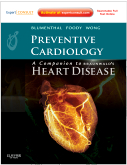|
|
|
| |
 |
|
|

|
 推薦指數:
推薦指數:





|
|
- 內容介紹
|
Preventive Cardiology: Companion to Braunwald's Heart Disease
Expert Consult - Online and Print
By Roger Blumenthal, MD, FACC, FAHA, JoAnne Foody, MD, FACC, FAHA and Nathan D. Wong, PhD, FACC, FAHA
Expert Consult Reference
632 Pages
Trim Size: 8 3/4 X 11 1/16 in
Imprint: Saunders
ISBN: 978-1-4377-1366-4
Copyright: 2011
Endorsed by the American Society for Preventive Cardiology! Preventive Cardiology - a new Companion to Braunwald's Heart Disease - addresses the prevention and risk stratification of cardiovascular disease so that you can delay the onset of disease and moderate the effects and complications. Drs. Roger Blumenthal, JoAnne Foody, and Nathan Wong discuss the full range of relevant considerations, including the epidemiology of heart disease, risk assessment, risk factors, multiple risk factor-based prevention strategies, and developments in genetics and personalized medicine. With access to the fully searchable text online at www.expertconsult.com, this authoritative reference gives you the clinically relevant information you need for the effective prevention of cardiovascular disease.
Key Features
Access the fully searchable text online at www.expertconsult.com.
Recognize the factors for prevention and risk stratification around cardiovascular disease and effectively delay the onset of disease and moderate the effects and complications, even for individual who are genetically predisposed.
Effectively navigate full range of considerations in prevention from epidemiology of heart disease, biology of atherosclerosis and myocardial infraction, risk assessment-established risk factors and emerging risk factors, multiple risk factor-based prevention strategies, and future directions-through genetics, personalized medicine, and much more.
Tap into the expertise of prominent leaders in cardiovascular disease prevention with guidance from Drs. Roger Blumenthal-longtime director of the Framingham Heart Study-JoAnne Foody, and Nathan Wong.
Gain a deeper understanding of the pathogenesis of disease and the rationale for management through discussions of basic science.
Apply current clinical practice guidelines to ensure optimal outcomes in both primary and secondary prevention.
|
|
|

